Beginner tutorial: How to get started with 360° photography?

The Holiday season is upon us and everyone is trying to figure out what presents to get. If you like to try new, cool devices, a 360° camera is an ideal gift! Don't worry - 360° photography no longer requires expensive equipment and complicated software. There is a few great, inexpensive point-and-shoot cameras on the market and now they got even cheaper!
Update, May 2019. For more recent camera recommendation, please see this article. The cameras listed below are still available on the market, but newer, better models are available.
360° cameras
Let's get started by looking at the cameras. Below you will find a list of what's currently available on the market. All these are point-and-shoot cameras, fairly easy to use with or without a mobile phone. It's a perfect Holiday gift for anyone interested in photography!
Ricoh Theta SC
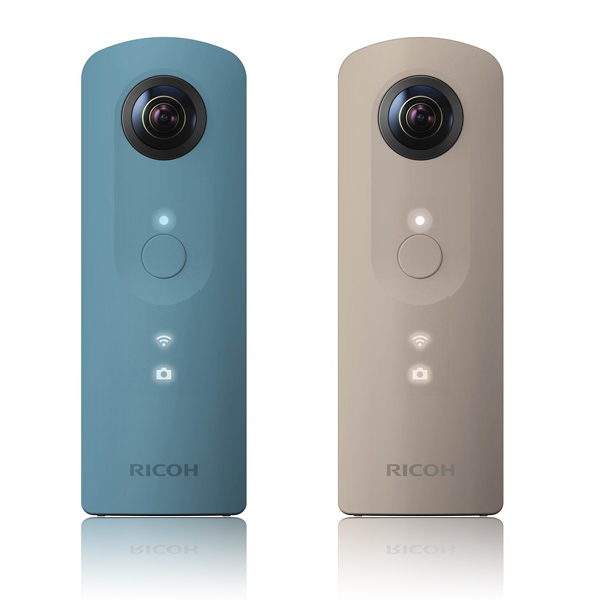
- Price: 279 USD
- Image resolution: 5376 x 2688
- Internal memory: YES
OUR RECOMMENDATION - Ricoh Theta is a veteran on the 360° camera market. It takes photos of slightly lower resolution than Samsung Gear360, but the quality is still pretty good, especially with low light. It has it's own memory, so no need for any MicroSD cards and the Theta app works with most mobile phones, iOS and Android alike.
Ricoh Theta SC is latest 360° model from the japanese manufacturer and as of today is the best choice for your first 360° camera. As a plus, it has a great form factor, fits easily in your pocket, so you can take it anywhere. When you use it, you'll look a bit like the Will Smith from Men In Black with a Neuralyzer ;).
Samsung Gear VR
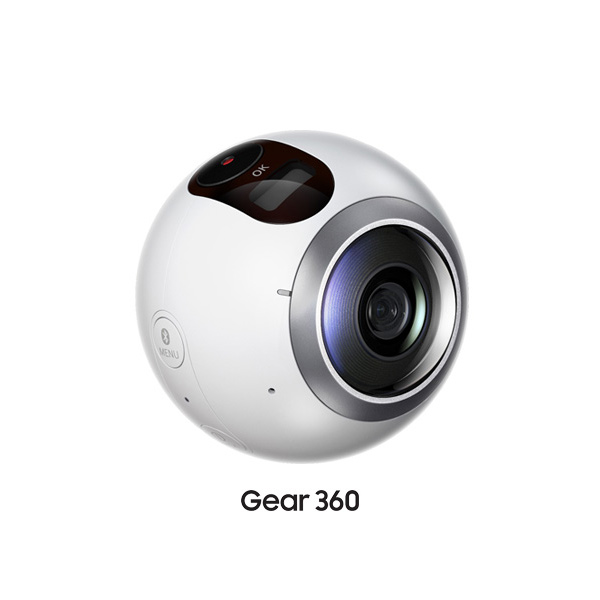
- Price: 299 USD
- Image resolution: 7776 x 3888
- Internal memory: NO (MicroSD card required)
Samsung perhaps offers the best quality from all the point-and-shoot 360° cameras available today. With its 30MP resolution, the photos are sharp and have a very reasonable level of detail. The form factor of the device isn't that great - it won't fit into your pocket, but it's a good looking and solid piece of hardware.
On top of the price of the camera, you will need to buy a MicroSD card, because it doesn't have any internal storage. The biggest problem of Gear360 is that it only works with a Samsung phone like the S6 or S7 (though there are hacks that make it work with other Android phones). If you have a Samsung or plan to buy one - we would recommend Gear360, if not... Ricoh Theta is a better choice.
Insta360 Nano
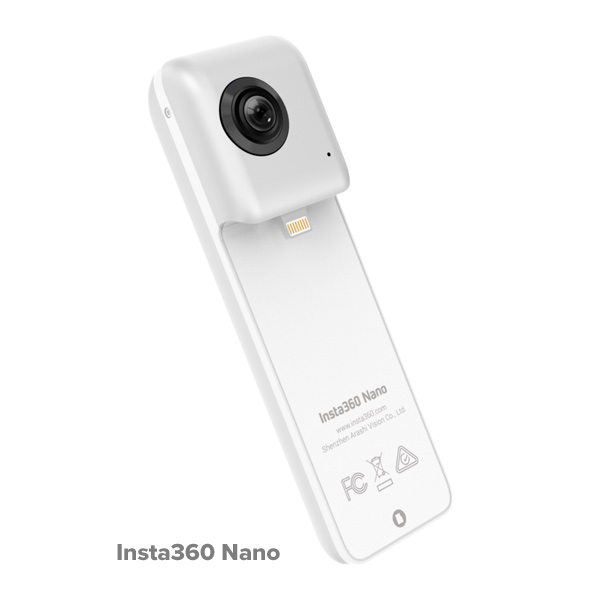
- Price: 195 USD
- Image resolution: 3040 x 1520
- Internal memory: YES (MicroSD card can be added)
Insta360 is a very interesting device. It's more an extension of your mobile phone rather than a standalone camera. You can attach it to an iPhone and shoot photos using an app. It comes in a super nice box that doubles up as a cardboard-vr viewer. It can also be used as a standalone camera, no need to attach it to a phone, but in this case you will need a memory card (MicroSD).
The resolution of the Insta360 Nano is much lower than the other cameras It's less than half of what you get with a Gear360, which visibly translates into picture quality. Another issue is that it only works with iPhones, though the producer is already working an on Android version. It's definitely a product to keep an eye on!
Nikon KeyMission
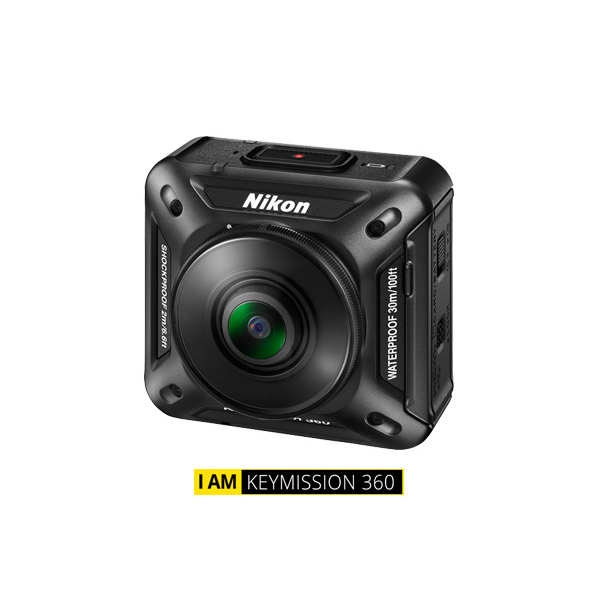
- Price: 497 USD
- Image resolution: 7744 x 3872
We were very excited for the Nikon KeyMission. Unfortunately after it was released in Octorber 2016, it turned, despite the promising specs, to have some serious issues. It takes still with a resolution higher than both Samsung Gear360 and Ricoh Theta, but they are often quite blurry and the stitching looks terrible. This is why, we would not recommend Nikon Keymission at this time.
Nikon however is a company that knows a thing or two about photography and cameras. We are pretty confident that they will fix all those issues in the future and deliver an awesome 360° camera!
How 360° cameras work
Are you curious how 360° photos are actually made? Here's a very simple, not-too-technical explanation. As you may have noticed above, all the devices have two lenses facing the opposite direction. Each lens has a 180 degree field of view (actually, it's a bit more than 180° to allow for some overlap).
When you take a photo, it makes two shots, one for each lens, at the same moment and then assembles them together like two halves of an apple, in a process called stitching.
A stitched image is saved as a rectangular image file, typically a JPG. The 360° image is contained inside a rectangle thanks to something called equirectangular projection. It's a hard word to pronounce, but the concept should be familiar to anyone who've ever seen a world map. A world map is a rectangle that represents the surface of a sphere, right? This is exactly how a 360° photo projection works!
Below is a sample of a equirectangular projection image. Notice the characteristic distortions, especially visible on the pavement on the bottom of the picture. Another characteristic is that the left and right edges match perfectly.
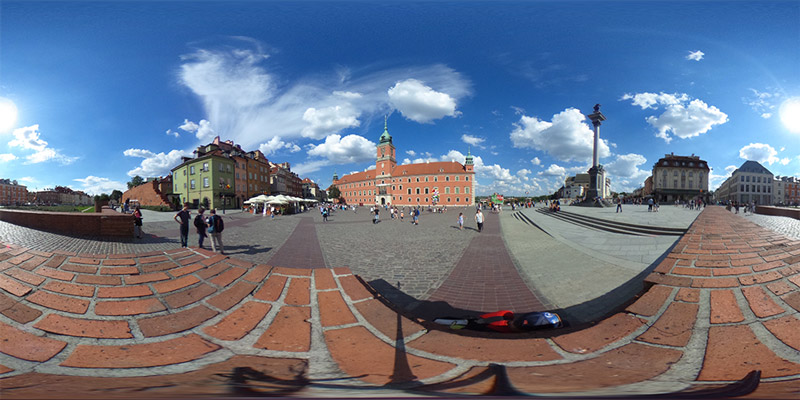
Every camera mentioned above outputs pictures just like this one. The image resolution we refer to in the list above, is the maximum size of the equirectangular projection image that the camera can produce.
Viewing and sharing 360° photos
Once you have your new shiny 360° camera and you take your first 360° picture, you may wonder how to view it and share it with others? After all, a equirectangular image, like the one above, is not very attractive to look at. This is where Kuula comes in!
Kuula makes it easy to upload and share all your 360° work. Thanks to our interactive photo player, you can enjoy your pictures in full 360° view and even in VR! Check out the same photo inside our player:
You can easily upload photos to Kuula, add filters and our cool signature lens flare effect! On top of that, Kuula offers a tiny planet editor, which is a different, very fun way to view 360° photos.
The best part is that Kuula is very easy to use and you can do it both from your mobile phone as well as from your desktop computer. Kuula works in a web browser, so anywhere there is one - you can use it, there's no need to install any apps. Here's a short video showing how to upload a photo:
You can easily share your 360° photos on Twitter, Facebook or anywhere else. You can also embed them on a blog or website.
That's it! We hope you will enjoy 360° photo making as much as we do and that you will share your work using Kuula. The Kuula team is hard at work, always adding more features, so check back often to see what's new!

